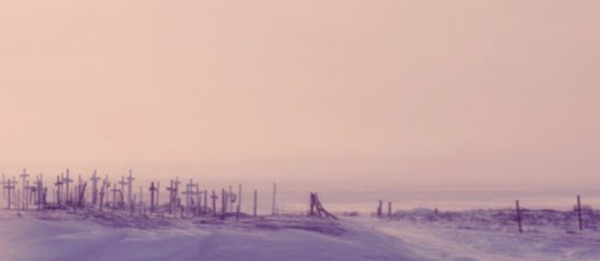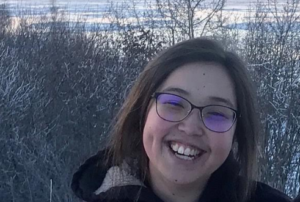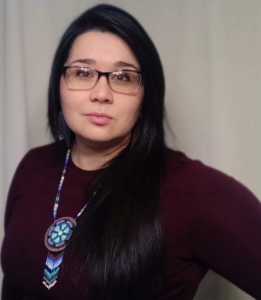
- Details
- By Shanelle Afcan and Christina McDonogh
Guest Opinion
As we sit outside during this shelter-in-place era of COVID-19, we are aware of the unsettling contrast between the peaceful cadence of snowfall and the presence of an ominous, unseen threat. Our thoughts keep returning to our own Native communities and the two hundred and thirty-eight others throughout Alaska.
We are troubled because we know that, unfortunately, the Indigenous people here are no strangers to pandemics. From the “Great Deaths” during first contact, to many later outbreaks, there is a long history of sorrow that should lead every Alaskan to be afraid for what is to come.
Experts say that we should compare COVID-19 to the flu that swept through the world in 1918. If true, this comparison does not bode well for Alaska: one hundred years ago, Natives accounted for eighty-two percent of Alaska’s influenza deaths, with some Villages losing up to 90 percent of adults over thirty years old.
These haunting numbers were likely the result of the fact that Indigenous populations had no immunity to protect them from the illness. Sadly, this dangerous factor was amplified by the fact that Villages had no more medical support than teams of nurses who were willing to travel from village to village.
 Shanelle Afcan
Shanelle Afcan
Now, nobody is immune to today’s virus and, just like in 1918, Villages still do not have access to medical care. Unless we take protective measures immediately, Alaska’s isolated paradises will be decimated once again.
To avoid catastrophe, some Villages like Koyukuk, Arctic Village, and Fort Yukon have chosen to close their borders. We implore all remote communities to follow in their example. Unfortunately, even after each village survives the difficulty of a weeks-long sequestration, each Alaskan must use that time to prepare for what comes next. As was the case for the 1918 flu, experts project that a second wave of the illness will likely run through the population.
Regrettably, the State’s Rural Health Tactical Group does not plan to send important supplies to Villages, but will rely solely on medevac services as the disease progresses. This will not work. We need our governing bodies to step up by immediately building and reinforcing health care systems across all of Alaska.
 Christina McDonogh
Christina McDonogh
First, Alaska’s Emergency Operations Center must rethink its “medevac-only” approach, Instead, it must bolster remote facilities with supplies and training for the small clinics that are already in the villages. Each health clinic should be equipped for an outbreak with short-term resources, like testing, monitoring, and medical equipment.
Second, the Alaska National Guard must stay ahead of the curve by supplying Alaska’s medical hubs with provisions of personal protective equipment, beds, ventilators, and a staff that is trained to work with rural Alaskans. Further, as the crisis progresses, the National Guard must be prepared to send small teams of healthcare workers to each village that is faced with an outbreak.
To accomplish these goals, Tribal, state, and federal governments must work together. Villages must close their borders then turn their attention on preparing for the worst. The State of Alaska must prepare to deploy the Alaska National Guard, to allocate funding necessary to coach rural health aides, and to send experienced doctors where they are needed. Federal agencies like the Indian Health Service must continuously monitor resources, implement emergency facilities planning, and help tribes access financial resources like the CARES Act.
Finally, the Army Corps of Engineers should build temporary hospitals to assist with overflow cases, as they have done during ebola outbreaks overseas.
The effects of COVID-19 on reservations in the Lower-48 provide a dire warning of what is to come. A haunting example comes from the Navajo Nation, which is shuddering from the rapid and overwhelming damage that is beginning to ravage their People. Significantly the numbers show that a person who lives on Navajo land is seven times more likely to contract the illness than a New Mexican who does not live on the reservation. Since living conditions such as lack of running water, overcrowding, and nearly-nonexistent healthcare on the Navajo Nation are strikingly similar to Alaskan Villages, we should expect similar statistics locally.
We must take a cue from Arizona and New Mexico, two governments that have already begun to implement many of the same precautions.”
Shanelle Afcan is from the Yupik communities of Nunam Iqua Alerneq on the Yukon Delta. Known by her family as Kavaangsaar, she loves eating tundra berries and smoked salmon.
Christina McDonogh is a Sugpiaq graduate of Chugiak High School and second-year student at Cornell Law School. Her family comes from Perryville, a village with beautiful black sandy beaches that are manufactured by the nearby active volcano, Mount Veniaminof.
More Stories Like This
Native News Weekly (August 25, 2024): D.C. BriefsUS Presidents in Their Own Words Concerning American Indians
Next on Native Bidaské: Preserving Indian Health with A.C. Locklear
Hozhonigo Institute Helps Drive $34.5M in Grant Pipeline for Tribal Communities
Torres, LaMalfa Lead Push to Safeguard Culturally Important Tribal Seed Varieties
Help us defend tribal sovereignty.
At Native News Online, our mission is rooted in telling the stories that strengthen sovereignty and uplift Indigenous voices — not just at year’s end, but every single day.
Because of your generosity last year, we were able to keep our reporters on the ground in tribal communities, at national gatherings and in the halls of Congress — covering the issues that matter most to Indian Country: sovereignty, culture, education, health and economic opportunity.
That support sustained us through a tough year in 2025. Now, as we look to the year ahead, we need your help right now to ensure warrior journalism remains strong — reporting that defends tribal sovereignty, amplifies Native truth, and holds power accountable.
 The stakes couldn't be higher. Your support keeps Native voices heard, Native stories told and Native sovereignty defended.
The stakes couldn't be higher. Your support keeps Native voices heard, Native stories told and Native sovereignty defended.
Stand with Warrior Journalism today.
Levi Rickert (Potawatomi), Editor & Publisher
